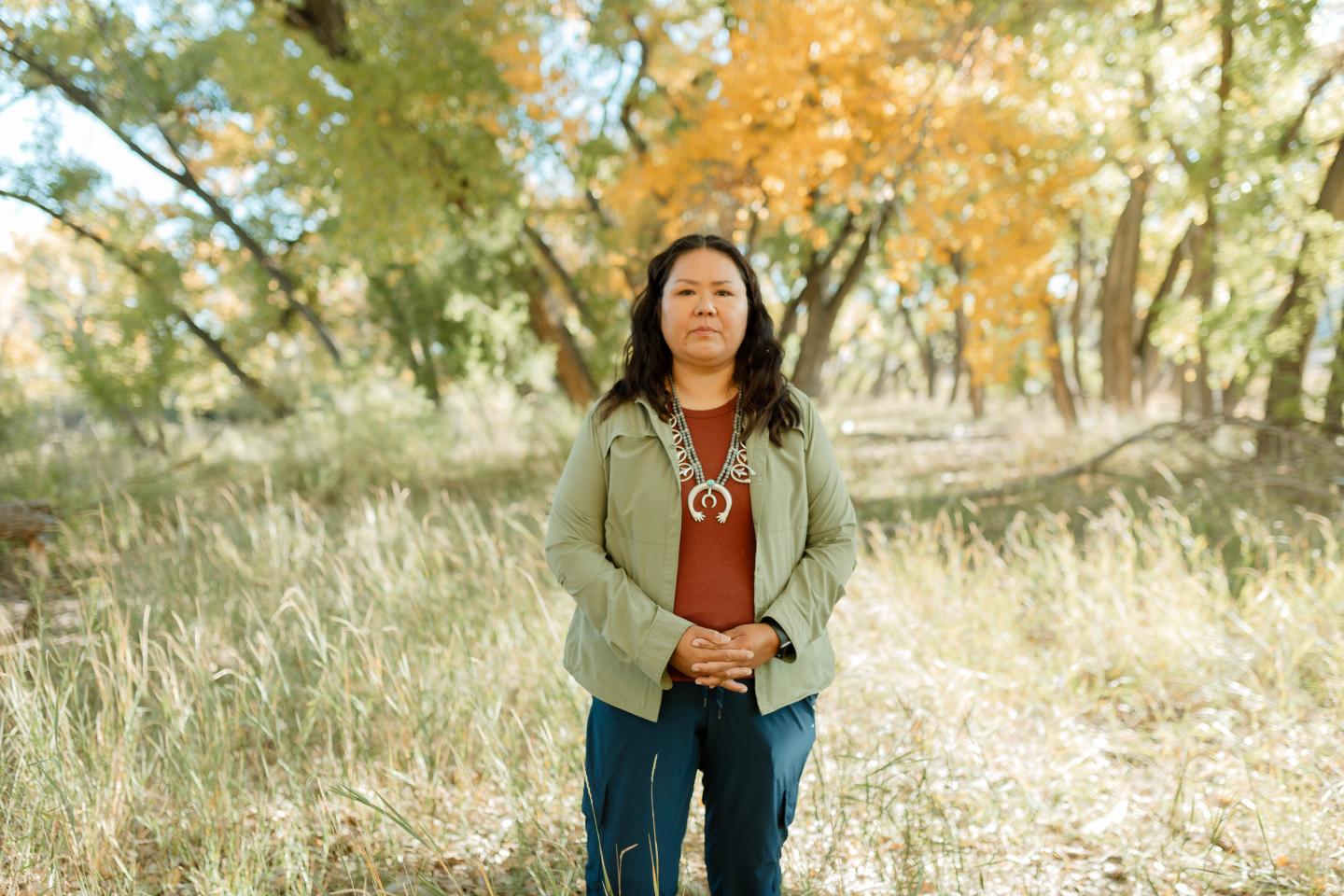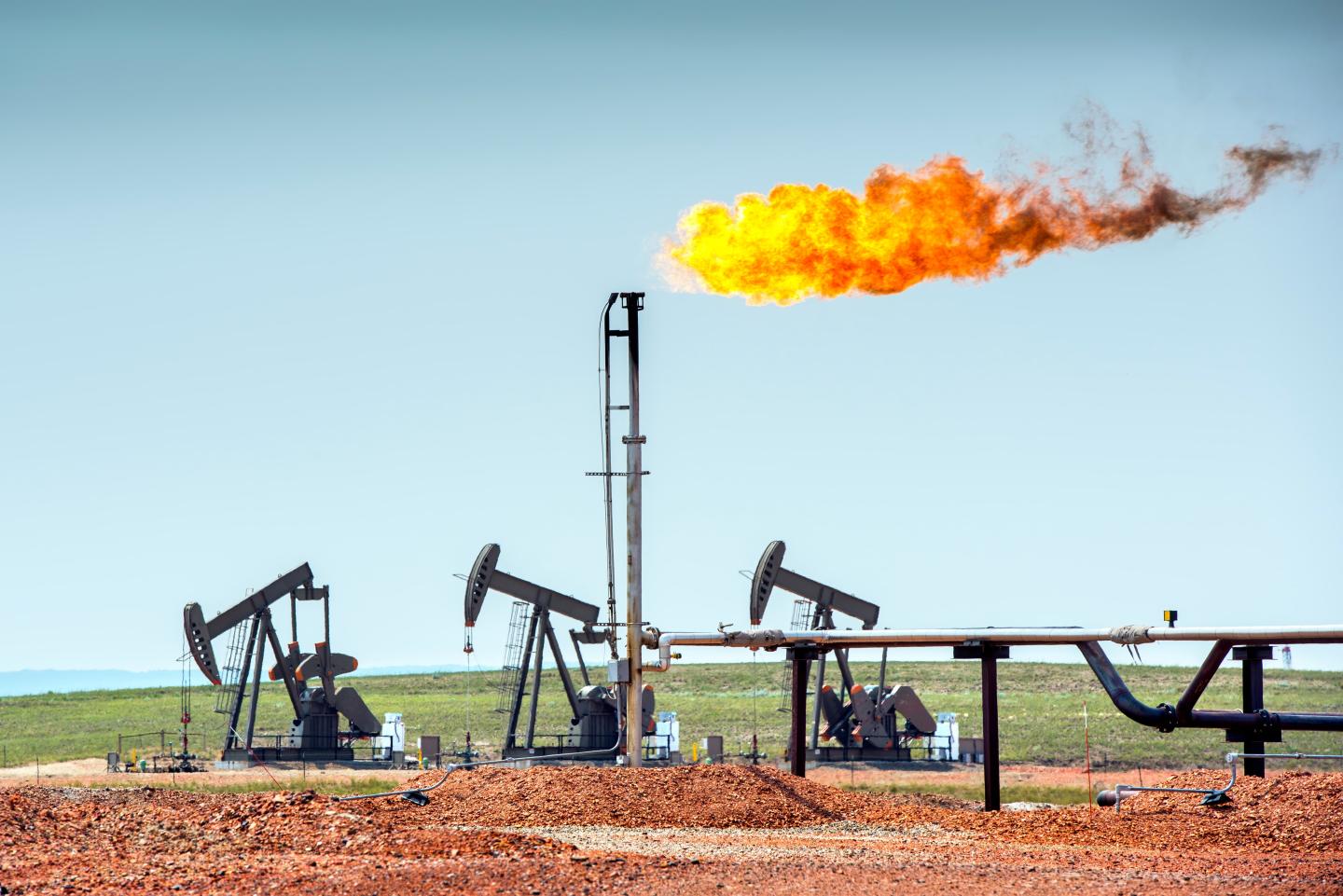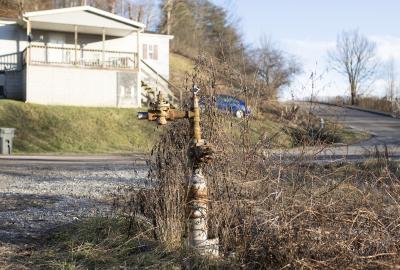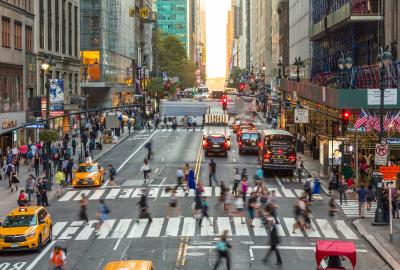Sweeping new US rules to cut climate-warming methane pollution
Wendy Atcitty grew up in the late 1970s seeing oil and gas pump jacks, bobbing like giant grasshoppers, all around her in northwest New Mexico. Yet her mother’s home, on Navajo Nation land, didn’t have electricity until 2007.

“One hundred years of oil and gas development, and what did we gain?” asks Atcitty, a former science teacher who now works with Naeva, a Native American civic action group, to educate communities about energy. “It’s unbelievable to see in my lifetime the impact of climate change on Navajo lands. Things got drier, warmer. The winds are harder.”
Atcitty and Naeva have been advocating for strong new Environmental Protection Agency rules to reduce methane pollution from the oil and gas industry — a major source. Methane is a potent, short-lived climate pollutant that is accelerating how quickly the planet heats up.
This weekend, their work paid off. The EPA finalized its first ever comprehensive oil and gas methane rule, which will cut climate and air pollution from nearly one million sites across the country.
“The safeguards will reduce tens of millions of tons of climate-damaging methane and other toxic, smog-forming pollution – strengthening vital climate and health protections for communities,” said Environmental Defense Fund president Fred Krupp, speaking from COP28, the U.N. climate conference in Dubai, where the official announcement was made.
Environmental Defense Fund advocacy and research drove support for the new rule that will slash methane pollution and protect the health of some 18 million people who live less than a mile from an oil and gas site. When methane is emitted from oil and gas equipment, it often carries toxic air pollutants with it, like cancer-causing benzene and smog-forming chemicals.
In New Mexico, Navajo Nation members are twice as likely to live within half a mile of such facilities. Atcitty recalls strong smells and constant headaches when drilling was taking place nearby. “There was a big flare, like 10 feet tall, about 100 feet from my late uncle’s house,” she says.”When the flare stopped, the headaches stopped.”

The new rule, through requirements such as more efficient equipment and more frequent leak detection and repair, is projected to cut 58 million tons of methane pollution, and 16 million tons of harmful air pollution by 2038. Avoiding 58 million tons of methane pollution will have roughly the same near-term climate impact of taking nearly a billion cars off the road for a year.
EDF has pledged to track the impact of the new rules and hold polluters who break them accountable.
Naeva and EDF are also working with the Navajo Nation government to reduce methane emissions from oil and gas operations on tribal land. Capturing methane instead of releasing it as pollution could bring in $1.2 million annually in royalties — funds that could help the tribe move toward climate resilience, says Atcitty.
“We want energy, but we don’t want it to grab our water and make us go looking for our asthma inhalers,” she says. “I hope that with these new rules, with more education about sustainable economies in our communities, that we can restore balance.”


